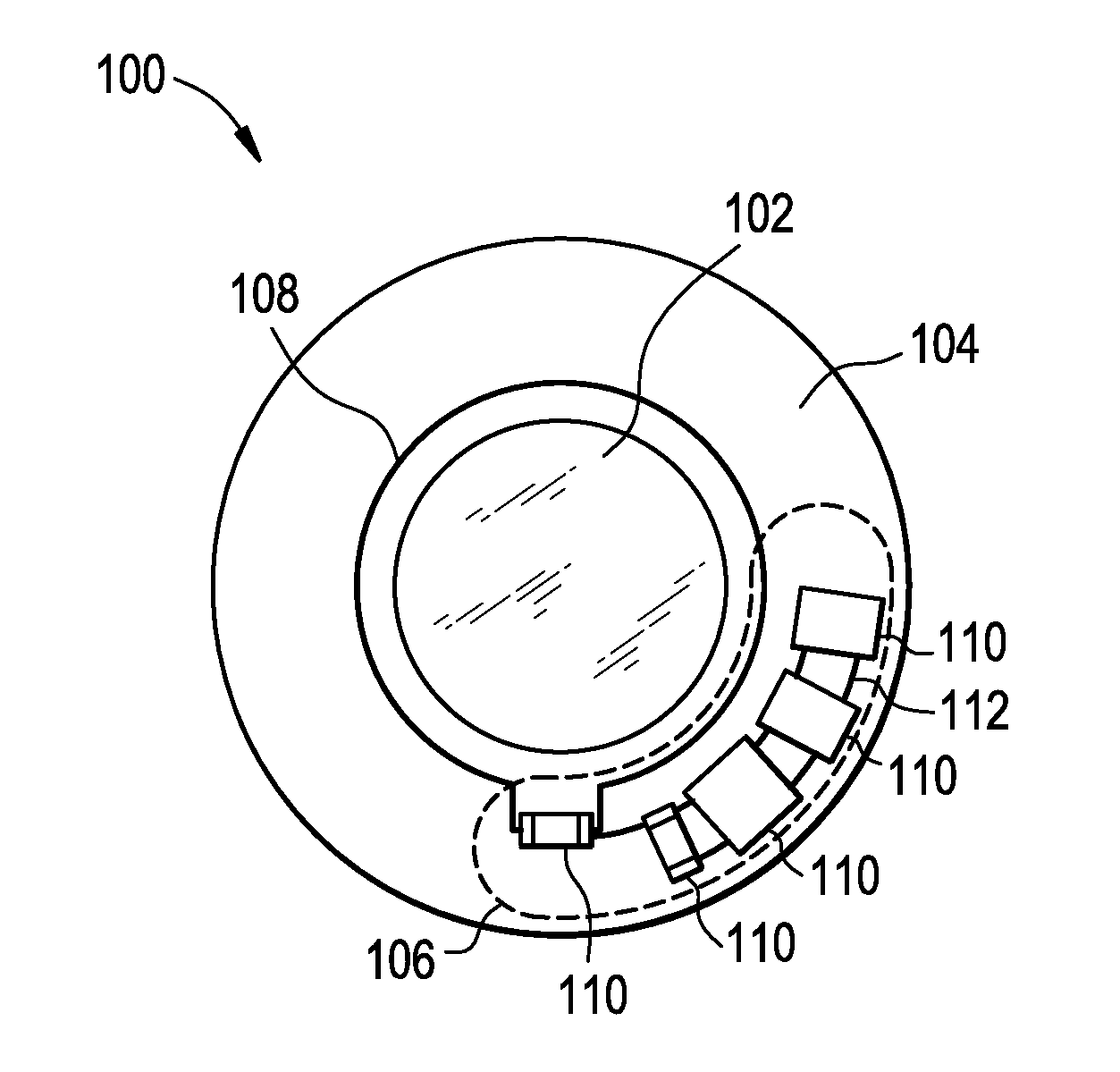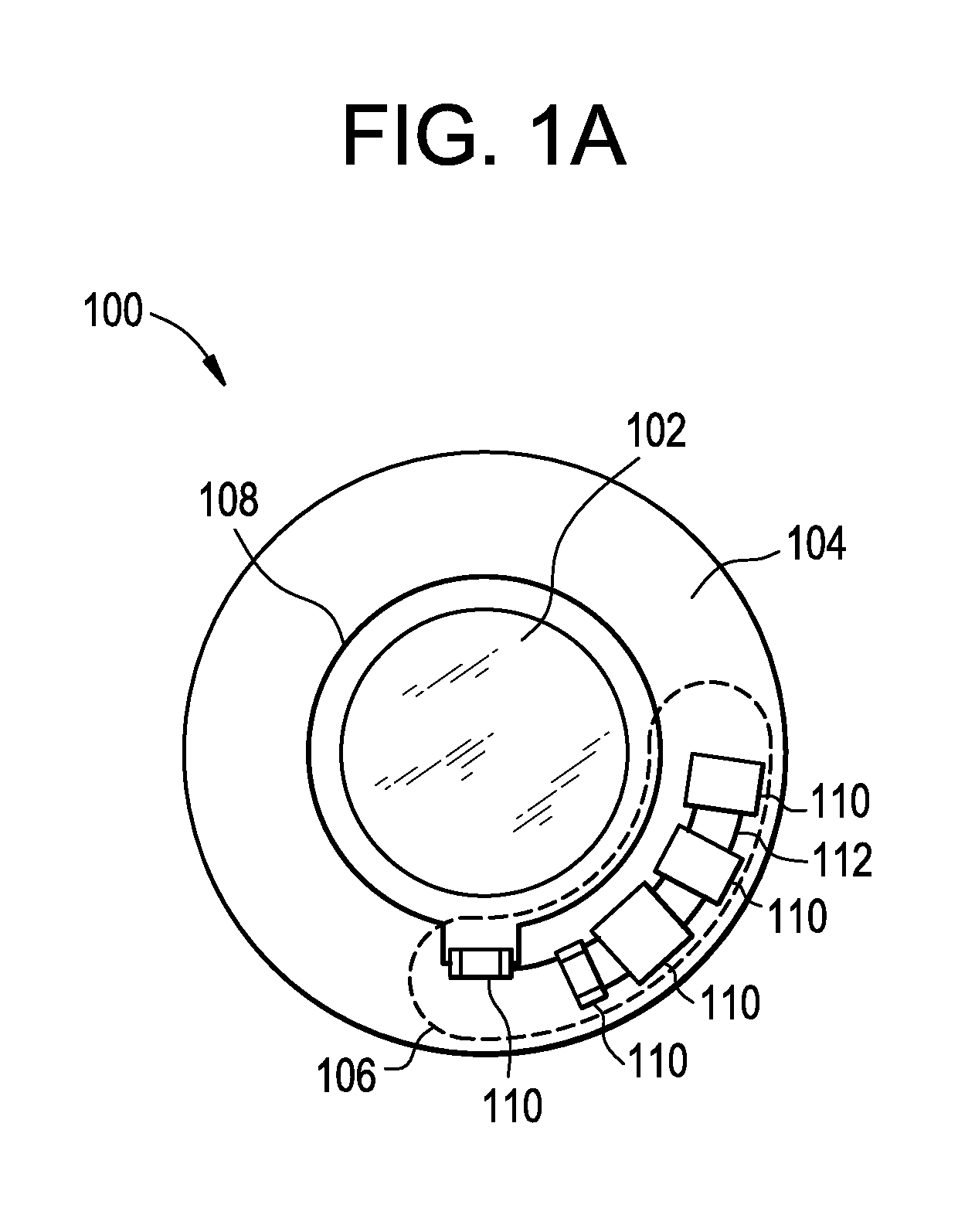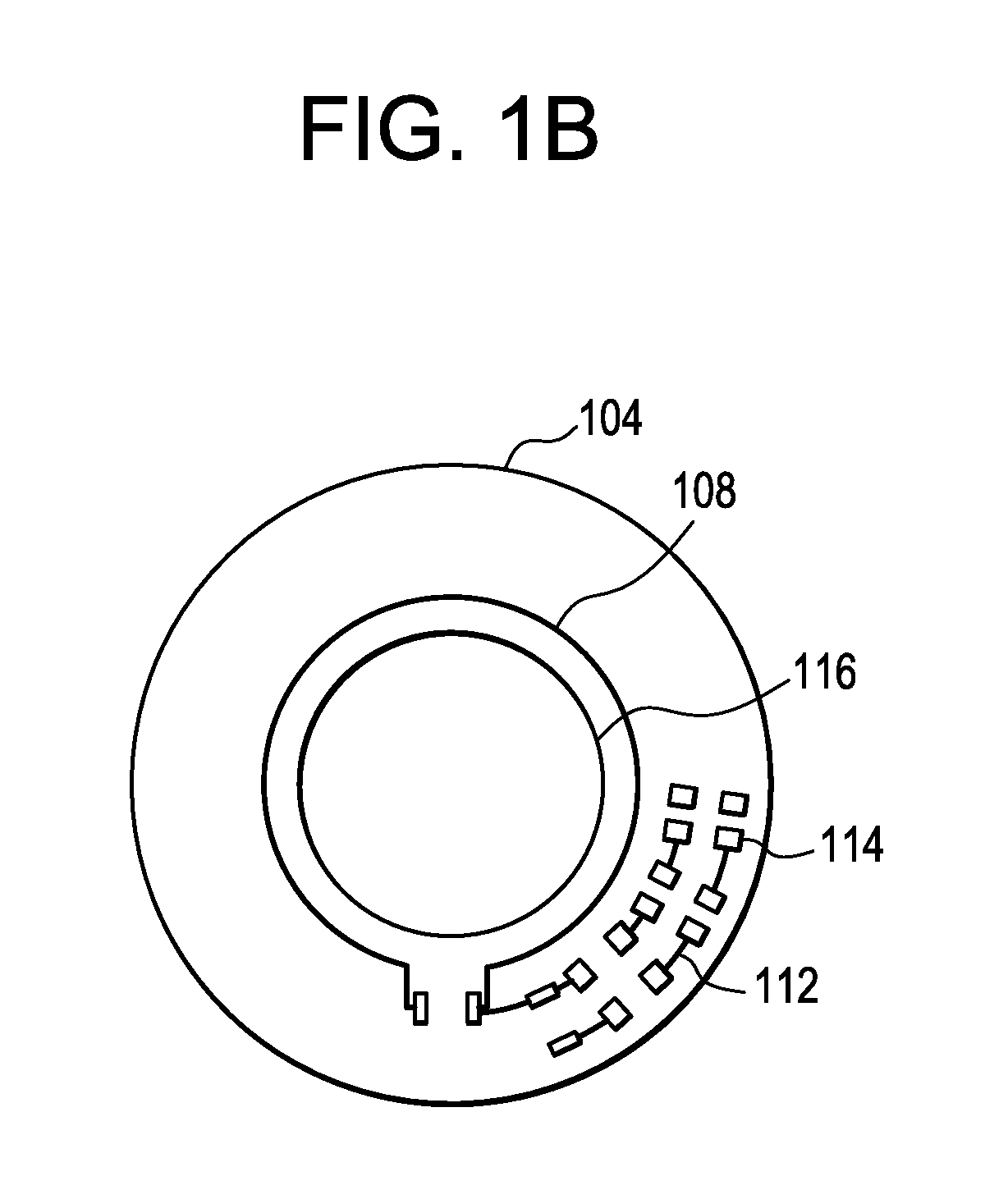Ophthalmic lens assembly having an integrated antenna structure
- Summary
- Abstract
- Description
- Claims
- Application Information
AI Technical Summary
Benefits of technology
Problems solved by technology
Method used
Image
Examples
Embodiment Construction
[0036]Referring to FIG. 1A there is illustrated a first exemplary embodiment of an optical lens assembly 100. Although illustrated as a contact lens, it is important to note that the present invention may be utilized in conjunction with any number of devices having medical and ophthalmic applications as well as any devices incorporating lenses, such as cameras, binoculars and microscopes. The exemplary optical lens assembly 100 comprises a lens structure 102, a circuit board 104, an electronic circuit 106 positioned on the circuit board 104, and a single turn loop antenna 108 also positioned on the circuit board 104 so as not to interfere with the lens structure 102. As utilized herein, the lens structure 102 may include a portion of an assembly that acts as an optical lens and not necessarily a separate component, but rather a region of a component such as a hydrogel overmolding. The electronic circuit 106 and the antenna 108 may be connected to or mounted to the circuit board 104 ...
PUM
 Login to View More
Login to View More Abstract
Description
Claims
Application Information
 Login to View More
Login to View More - R&D
- Intellectual Property
- Life Sciences
- Materials
- Tech Scout
- Unparalleled Data Quality
- Higher Quality Content
- 60% Fewer Hallucinations
Browse by: Latest US Patents, China's latest patents, Technical Efficacy Thesaurus, Application Domain, Technology Topic, Popular Technical Reports.
© 2025 PatSnap. All rights reserved.Legal|Privacy policy|Modern Slavery Act Transparency Statement|Sitemap|About US| Contact US: help@patsnap.com



